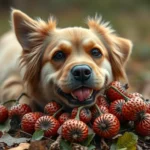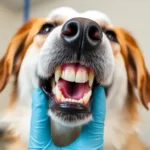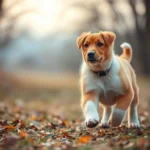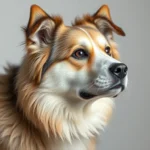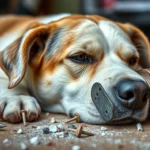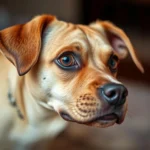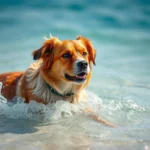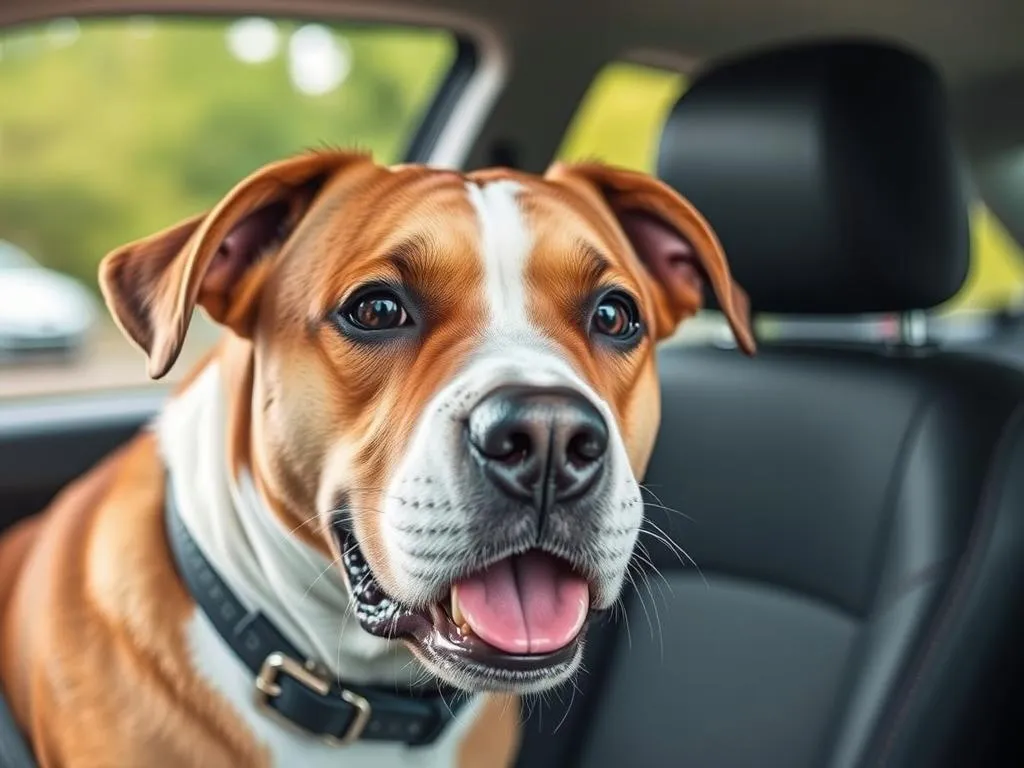
Understanding your dog’s health care needs is essential for their well-being and happiness. One common concern many dog owners face is drooling, particularly when their furry friends are in the car. Why does my dog drool in the car? This question is frequently posed by pet owners, reflecting worries about their dog’s comfort and health during travel. Recognizing the reasons behind drooling can help you address any underlying issues and ensure a pleasant experience for both you and your dog.
Understanding Dog Drooling
What is Drooling?
Drooling in dogs, also known as hypersalivation, is the excessive secretion of saliva. While some drooling is normal, especially in certain breeds, excessive drooling can signal anxiety, excitement, or potential health issues. Differentiating between normal and excessive drooling is crucial for identifying the underlying cause and addressing it properly.
Common Causes of Drooling
Dogs may drool for various reasons, including:
- Excitement: Anticipation of an enjoyable experience, such as going for a walk or a car ride, can trigger drooling.
- Anxiety: Stressful environments or situations may lead to increased salivation.
- Health Issues: Oral problems, nausea, or other medical conditions can cause excessive drooling.
Understanding whether the drooling is temporary or chronic will help you decide on the right course of action.
Why Dogs Drool in the Car
Excitement and Anticipation
For many dogs, car rides are thrilling. The sights, smells, and sounds stimulate their senses, leading to a surge of excitement. This excitement often results in increased salivation, which is a normal response. Dogs may drool in anticipation of reaching a destination, whether it’s a park, a beach, or a visit to a friend.
Motion Sickness
Another reason dogs may drool in the car is motion sickness. Just like humans, dogs can experience nausea when traveling. Symptoms of motion sickness in dogs include excessive drooling, vomiting, and restlessness. The inner ear, which helps maintain balance, can be affected by the movement of the vehicle, leading to discomfort and increased saliva production.
Anxiety and Stress
Car rides can also be a source of anxiety for dogs. Triggers may include unfamiliar environments, loud noises, or even the confinement of a vehicle. Behavioral signs of anxiety can manifest in various ways, including:
- Panting
- Whining
- Drooling
Recognizing these signs is essential for understanding your dog’s emotional state and addressing their needs effectively.
Medical Conditions
In some cases, drooling in the car may be linked to underlying medical conditions. Issues such as oral infections, dental problems, or gastrointestinal disturbances can lead to excessive salivation. If you notice persistent drooling that occurs only in the car or is accompanied by other concerning symptoms, it’s essential to consult your veterinarian.
Identifying the Cause of Drooling in the Car
Observational Tips
To determine the cause of your dog’s drooling during car rides, it’s essential to observe their behavior before, during, and after travel. Look for patterns in their drooling, such as:
- How much they drool
- Whether it occurs at specific times
- Any accompanying behaviors (e.g., pacing, whining)
Keeping a Drooling Journal
Tracking drooling incidents can help pinpoint triggers and patterns. Consider maintaining a journal that includes:
- Time of drooling episodes
- Duration
- Context (e.g., destination, weather conditions)
This information will be valuable when discussing your concerns with a veterinarian.
Consulting with a Veterinarian
If your dog’s drooling seems excessive or is accompanied by other symptoms (like vomiting or lethargy), it may be time to seek professional help. A veterinarian can conduct a thorough examination to identify any underlying health issues and recommend an appropriate treatment plan.
Managing Drooling in the Car
Preparing Your Dog for Car Rides
Acclimatizing your dog to car travel can help reduce anxiety and excitement. Here are some tips:
- Short Trips: Begin with short car rides to help your dog get used to the experience gradually.
- Positive Reinforcement: Reward your dog with treats and praise for calm behavior in the car.
- Comfort Items: Bring along their favorite toys or blankets to provide comfort during the ride.
Reducing Motion Sickness
If your dog experiences motion sickness, there are several strategies you can employ:
- Feeding Schedule: Avoid feeding your dog a large meal right before the trip. Instead, opt for a light snack a few hours prior to travel.
- Medication: Consult your veterinarian about anti-nausea medications that may help alleviate symptoms during car rides.
- Ventilation: Ensure good airflow in the vehicle to help your dog feel more comfortable.
Reducing Anxiety
For dogs that experience anxiety during car rides, consider implementing the following strategies:
- Calming Products: Pheromone sprays, calming collars, or anxiety wraps can provide soothing effects.
- Desensitization Training: Gradually expose your dog to the car environment while rewarding calm behavior.
- Music Therapy: Playing calming music can help soothe anxious dogs during travel.
Maintaining Overall Dog Health
Regular Veterinary Check-Ups
Routine veterinary visits are vital for early detection of health concerns. Discuss any issues related to drooling, anxiety, or motion sickness with your veterinarian. They can provide guidance on preventative care and identify any underlying health problems that may contribute to drooling.
Dental Health and Hygiene
Oral health plays a significant role in a dog’s overall well-being. Poor dental hygiene can lead to infections and discomfort, which may cause drooling. To maintain your dog’s dental health:
- Regular Brushing: Brush your dog’s teeth regularly with toothpaste formulated for dogs.
- Dental Chews: Provide dental chews or toys that promote oral hygiene.
- Routine Cleanings: Schedule professional dental cleanings with your veterinarian as needed.
Nutrition and Diet
A balanced diet is crucial for your dog’s overall health and can impact drooling. Ensure your dog is eating a high-quality diet tailored to their age and health needs. Consult your veterinarian for dietary recommendations that support your dog’s well-being.
Conclusion
Understanding why does my dog drool in the car is essential for every dog owner. By recognizing the various causes of drooling, from excitement and anxiety to potential health issues, you can take proactive steps to address your dog’s needs. Paying close attention to your dog’s behavior, maintaining their health through regular check-ups, and implementing strategies to manage anxiety and motion sickness can ensure a more comfortable travel experience. Your four-legged friend deserves the best, and prioritizing their health care will help you both enjoy those car rides together!

